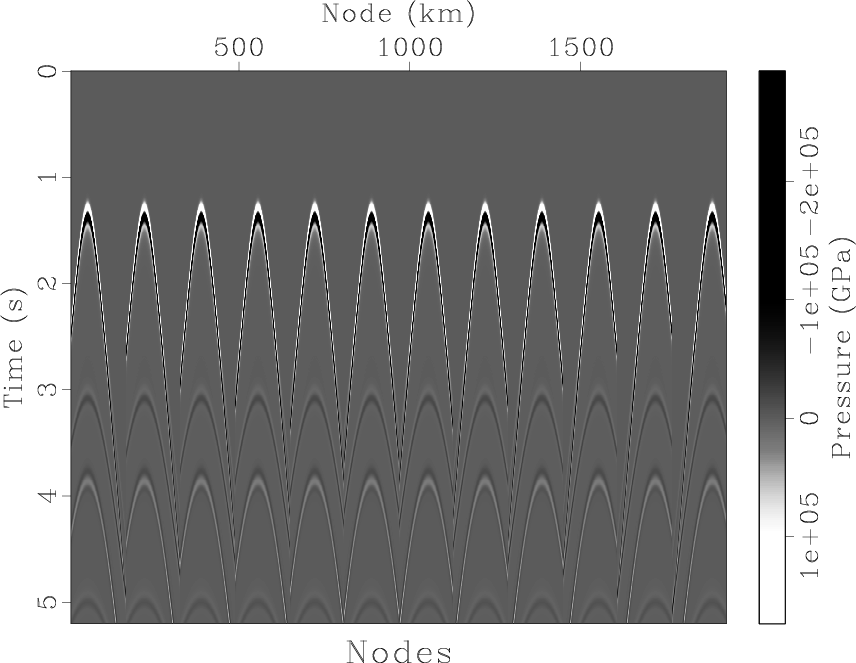 |
 |
 |
 | IWAVE Structure and Basic Use Cases |  |
![[pdf]](icons/pdf.png) |
Next: Linearized Simulation
Up: Multi-shot (survey) simulation
Previous: Multi-shot (survey) simulation
Recall that output files for IWAVE applications must exist prior to
execution. Therefore, to simulate 12 shots at intervals of 400 m over
the model depicted in Figure 1, the first step is
to create a suitable SEGY data set to hold the output. Therefore the SConstruct script creates the output file of zero SEGY traces ( line8-12km.su), subsequently filled with samples by IWAVE, all as
part of the same Flow command. As note above, the source must
be properly embedded in a space-time field (collection of SEGY traces)
for each shot location. The utility trace/main/towed_array.x
provides a convenient method for combining the position data of a
prototype SEGY trace file with a choice of source array to produce
translations of a source array to correct shot positions. Other
parameters are as in the single-shot case. The result is displayed in
Figure 11.

|
|---|
line8-12km
Figure 11. Response of 13 seafloor pressure sensors
spaced 400 m apart at
1.875 km depth, to 400 shots spaced 25 m apart at 6 m depth, sources
are isotropic point
radiators, source pulse is Gaussian
derivative with peak frequency 5 Hz. Velocity-squared model depicted
in Figure 1.
|
|---|
![[pdf]](icons/pdf.png) ![[png]](icons/viewmag.png) ![[scons]](icons/configure.png)
|
|---|
Perusal of the project/SConstruct script shows that in the
invocation of acd.x, only the filenames have changed. The
dataflow design of IWAVE, in which data objects determine the way in
which they are read/written, implies that the information about
changed source/receiver geometry and data volume does not need to be
explicitly passed to the simulation command.
 |
 |
 |
 | IWAVE Structure and Basic Use Cases |  |
![[pdf]](icons/pdf.png) |
Next: Linearized Simulation
Up: Multi-shot (survey) simulation
Previous: Multi-shot (survey) simulation
2015-04-20
